
The Oceanides, York House, Twickenham, Greater London,” by Oscar Spalmach (Italian, 1864-1917), who carved them in Carrrar Marble in the the Roman studio of Orazio Andreoni at the turn of the nineteenth century. Photographs by Robert Freidus Commentary by Jacqueline Banerjee and George P. Landow. [Click all images below for larger pictures.]



Two left: Venus standing between the hippocampi. Right: Two nude nymphs .
The poses the sculptor has chosen make clear that despite the classical subject chosen, Spalmach has no interest in classical serenity and balance. In fact, his delight in exploring the female form in motion produces bodies in strained and occasionally awkward poses, such as we see in the photographs immediately above and especially in prone woman who is extending her arm (see immeditely below).
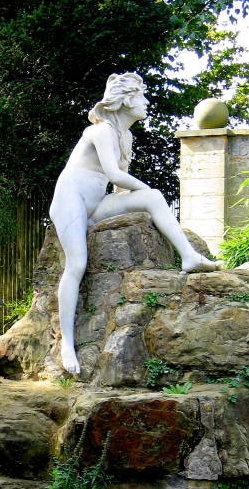
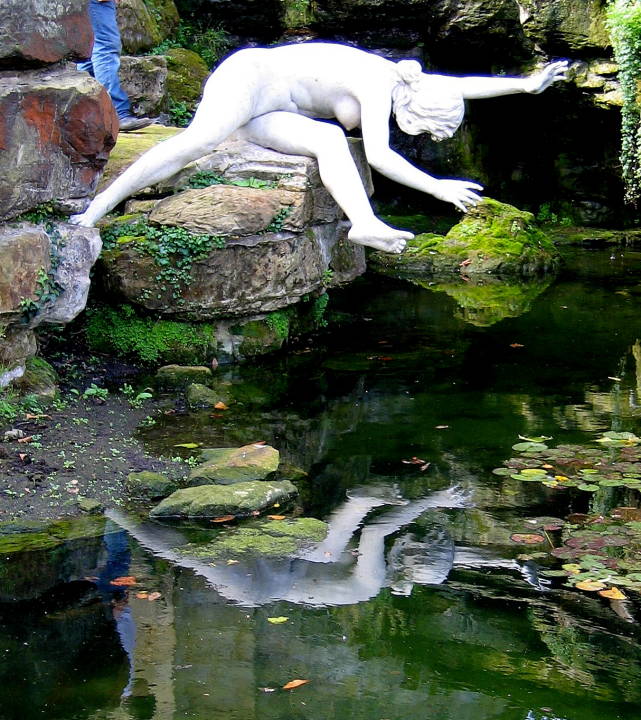
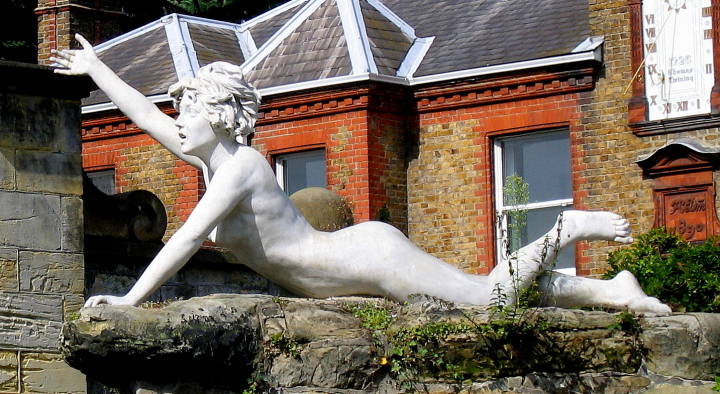
These three figures in the cascade exemplify the point made many years ago” by Rudolf Arnheim that the closer one gets to realism and away from hallowed convention in representation and composition, the closer one gets to abstraction. The nude reflected in the water, who appears so different from a graceful, balanced classical pose, thus seems perfectly suited to modernist compositions.
A plaque at the side of the fountain” by the York House Society explains in part:
These sculptures were brought to England to adorn the Surrey property of Whitaker Wright, but were dispersed when in 1904 he was found guilty of fraud and unexpectedly died. Similar pieces from his collection can be seen in the Beale Wildllife Park near Pangbourne. The York House Garden Statues came to Twickenham in 1909 still in their packing cases, bought for £600” by the last person to own York House and arranged in their present display” by the firm of J. Cheal & Sons, specialists in handling garden statuary.
The new owner was Sir Ratan Tata, the Indian merchant prince and philanthropist knighted” by King George V. He and his wife were popular in Twickenham and used to hold parties in the garden for local people. Sir Ratan died in 1918, and when his wife returned to India she sold York to Twickenham Urban District Council for use as Municipal Offices. The statues were not part of the sale but remained out.
In the late 1980s a spirited local citizen named Elizabeth Bell-Wright encouraged the York House Society and the Twickenham Society to save the statues, then on brink of destruction” by neglect and vandalism. Further restoration has been carried in 2007.


According to Holden Conservation, which carried out this recent work, the sculptures here
portray Venus riding a pair of Hippocampi surrounded” by seven white marble nymphs. The cascade itself is constructed from natural ironstone blocks with marble edging to the main tiers and Sienna marble sea shells. There is a concealed pump house beneath the construction housing equipment to circulate the water.
The whole ensemble is very dramatic and dynamic. Venus has one hand raised to her flowing hair, and the other held out in front of her. The two horses, prancing spiritedly, have finny wings spreading out from their flanks, and webbed hooves. The seven nymphs, some on the scallop shells, are arranged in an assortment of generally lively poses below. The three in the middle have their arms raised as well, reaching up to Venus, two with fingers outspread, the other, in the middle (best seen in the centre of the last row of pictures), offering her a pearl (see "York House Nymphs & Grotto"). Then there are two pairs of nymphs further away at each side.
The work was appropriately sited, not only because it is beside the Thames, but also because it was set in a lavish context. Along with a sunken garden and a pond, Sir Ratan had built a Chinese bridge and an Italian loggia in his Riverside Garden. A footbridge provided access from York House itself. This whole part of Twickenham is redolent of days gone” by. The medieval tower seen in the distance, in the main picture, is that of the parish church of St Mary the Virgin, Twickenham, where Alexander Pope is buried.
Although well known to locals, the cascade is liable to startle passers-by who unexpectedly glimpse rearing horses and nude figures just on the other side of the railings, gleaming white amongst the surrounding foliage.
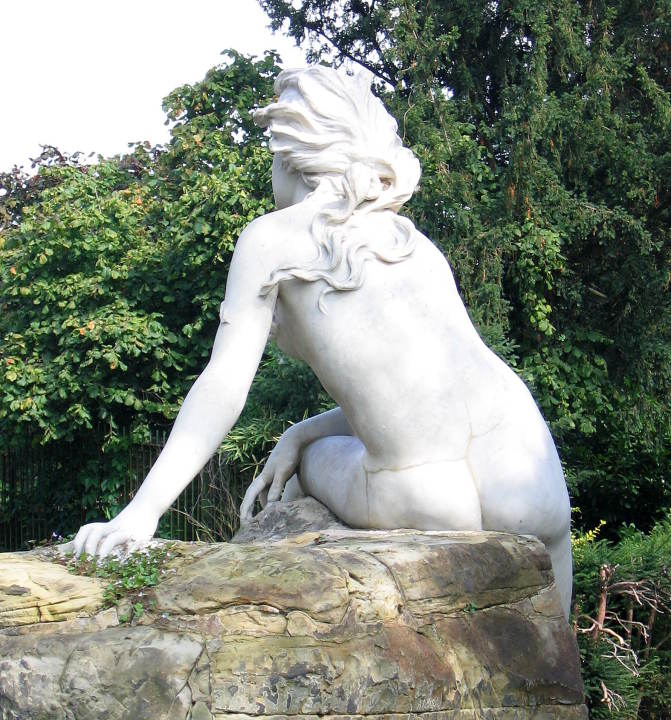
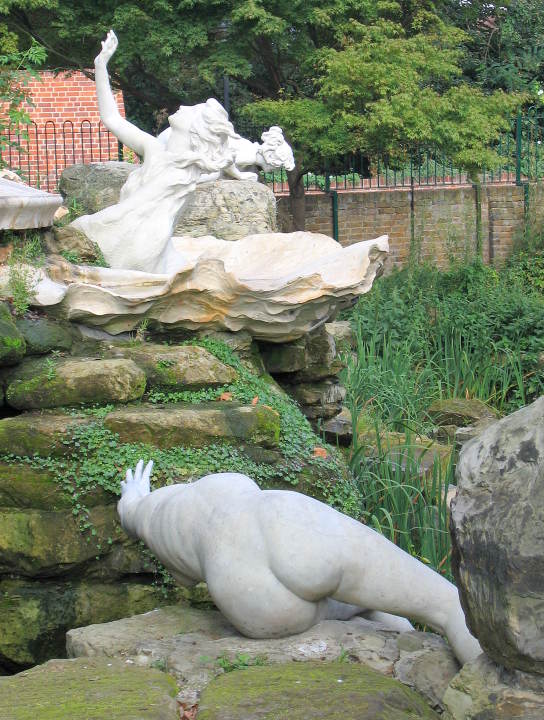
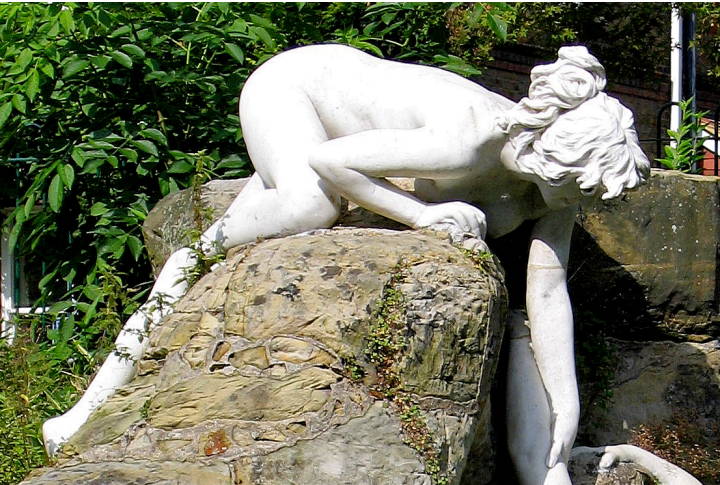
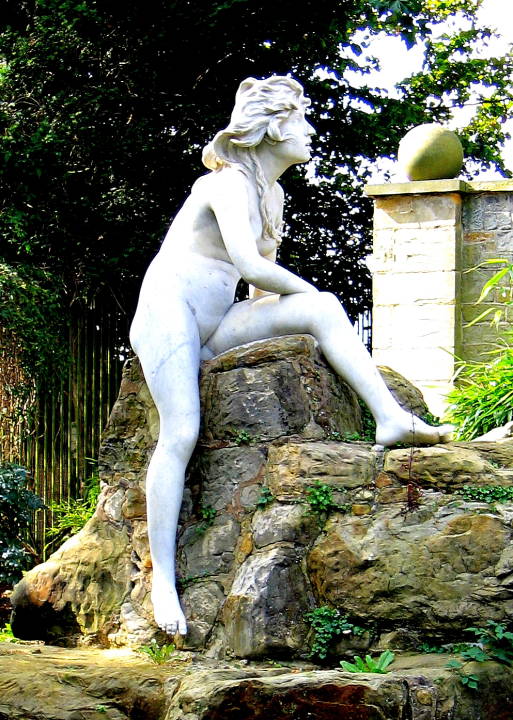


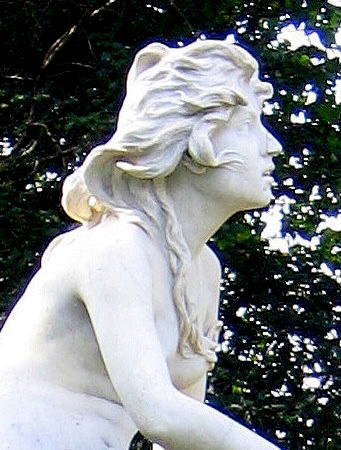
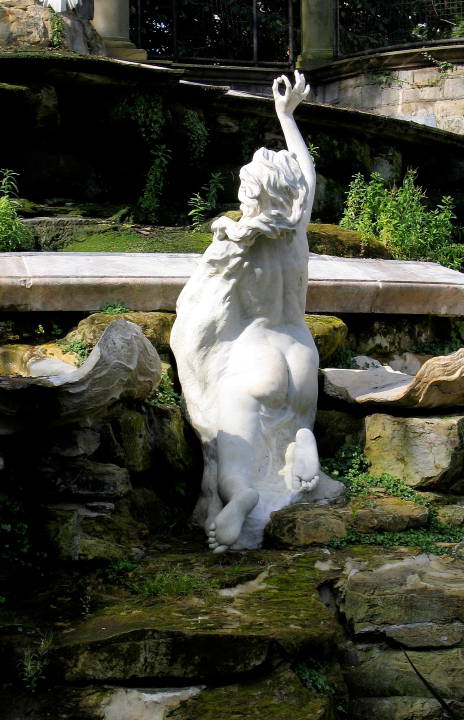
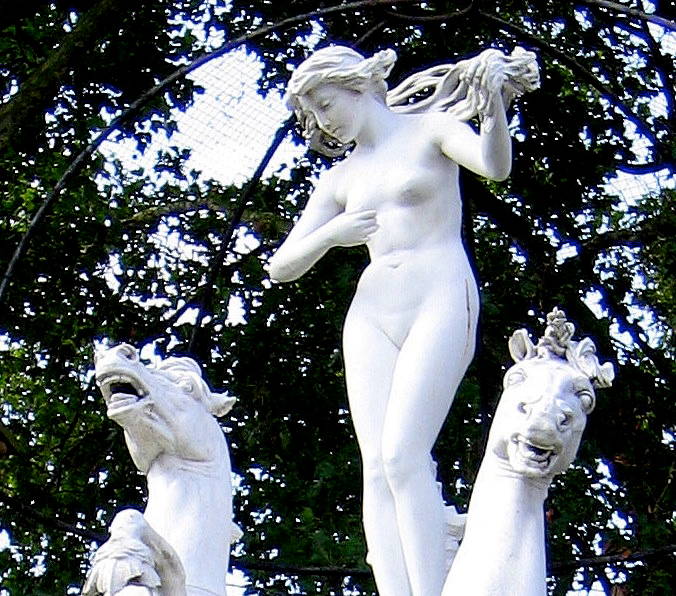
Right: Venus extending her hair.
Bibliography
"York House." Information sheet from Open House, London, 2008. Print.
York House Cascade. Conservation company's site. Web. 20 May 2011.
York House Nymphs & Grotto." Fuill Record PMSAVADS: the online resource for visual arts. Web. 20 May 2011.
Last modified 19 May 2011